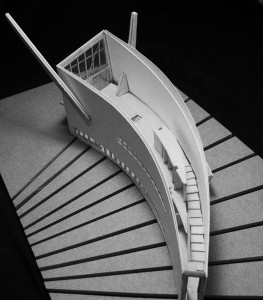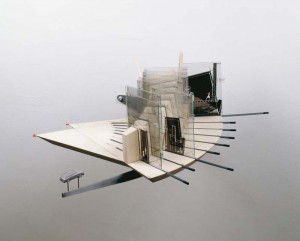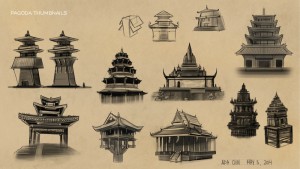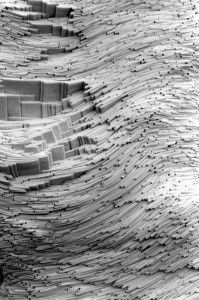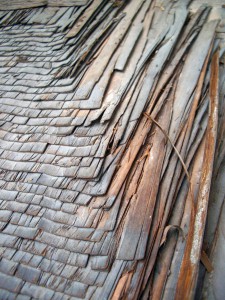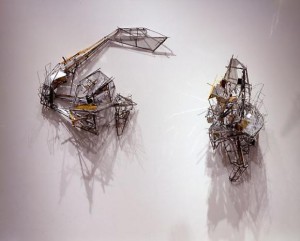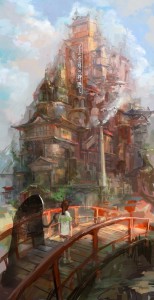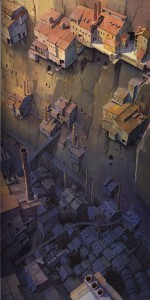WAR ARCHITECTURE
|
‘Cogito ergo sum’ (I think, therefore I am) by Rene Descartes Human beings have the natural instinct to create artefacts, tools and mechanisms to protect their own survival. This is human nature. In other words, artefacts and tools represent unity of human and nature. The story of hut theory illustrates vividly how human beings respond to natural disasters in order to survive and later in order to live a better life. Without the dialectical tension between both, ‘emptiness’ in the realm of Buddhist philosophy has no value. This thesis is the exploration of the relationship between human existence and the nature of architecture, especially further develop the concept of ‘emptiness’ in Buddhist philosophy. This key concept is in fact not merely referring to the physical space, but the ‘other space’, the psychological space that individual is the creator and demise of it. WHAT?
I will be using drawings and films to deliver that particular ancient thought of ‘emptiness’ and revitalize it into a new kind of space. This concept is taken from the ritual of rebuilding the Shinto Shrine every 20 years in order to be ‘forever new and forever ancient’. The site itself will be based on the spiritual criteria, nature or objects that will play a fundamental role towards the design. For example, the river has a purification meaning that may take into account of the design or the height of site may bring another quality towards the space. The scale of the site or objects will vary dependent on the surrounding elements in order to emphasise the continuous interaction between ‘time’ and ‘space’. The natural quality of the site plays a fundamental role towards the design of this ‘psychological space’. In addition, the exploration of the use of various materials that may bring towards this space will be one of the major ‘catalyst’ towards creating the notion of ‘feeling’ for one’s free will. WHY? ‘Architecture and war are not incompatible. Architecture is war. War is architecture.’ By Lebbeus Woods. With this statement I would challenge Architecture and war is compatible. Architecture is the soul and the sword of a samurai. Architecture exist for War. War, conflicts and crisis are being constructed between countries, provinces, cities, towns, families and self. Destruction is no longer formed by the ‘nature’, ‘is no longer the outcome of blind rage, but increasingly a matter of meticulous calculation.’ stated by Ole Bounman. Therefore in order for one to be able to ‘meticulously’ destruct, one must also be able to ‘meticulously’ construct. However, it is no longer a construction of a shelter nor a primitive hut, but the construction of the ‘soul and the sword of a samurai.’ One must prepare for war, to train to ‘self-discipline and sense of duty, together with the contempt for material goods and for the fear, the refusal of the pain and especially death.’ by Wiki. In order to prepare one self, one must acknowledge and question the existence of one self. ‘I think, therefore I am’ by Rene Descartes. Without ‘Human Nature’, nature has no value. Without Human Nature, the ‘emptiness’ in Buddhism no longer exists. Without ‘Human Nature’, this thesis cannot not be explored. This thesis is the exploration of the relationship between human existence and the nature of architecture, especially developing the concept of ‘emptiness’ in Buddhist philosophy. How this key concept is understood as an ‘other space’, the psychological space that individual is the creator of it will be explored in this thesis. ‘Pagodas’ are quintessential components in Japanese temple compounds. The structure itself initially is an interpretation of the Indian stupa and a role as a reliquary which slowly loses its function and begins to transform into a watchtower but still preserving the value of odd number of storeys for luck. It is evidently shown that the importance of pagoda has lost its value. ‘Pagoda’ once was the most sacred structure for Buddhist faith but now is being replaced by the preacher hall. HOW? First by questioning ‘War and Architecture’, architecture acts as a medium or a tool to project information or images to readers that causes certain particular ‘feelings’ or ‘emotions’. The value of Pagodas towards the Buddhist faith has decreased, therefore for this project, I explore the way to re-activate those pagodas with the main concern of the human value or the human battle towards one self, into one’s psychological space. A new kind of space that can provide sufficient training either with one-self or a group to discipline one’s own state of mind in this ‘oblivion’ world. Second, studying various pagoda and the symbolic meanings behind the formation of these artefacts may bring us better understanding of the history, culture, environment and the major influences of these sacred structures. Thirdly, the exploration of materials can contribution the fundamentally elements for the creation of that particular space, a particular atmosphere and the one particular space for one soul to dwell in without a single fear.
BIBLIOGRAPHY 1. Suzuki Kakichi , 1980, Early Buddhist Architecture in Japan, Kodansha International; 1St Edition edition (1980) 2. Simone Pheulpin, 1941, a la galerie des Ateliers d’art 3. Bergson Henri, 1896, Matter and Memory, Digireads.com 4. Descartes Rene, 1999, Discourse on Method and related writings, Hackett Publishing Company 5. Bunce. Willam, Religions in Japan: Buddhism, Shinto, Christianity, Charles E Tuttle Company. |
